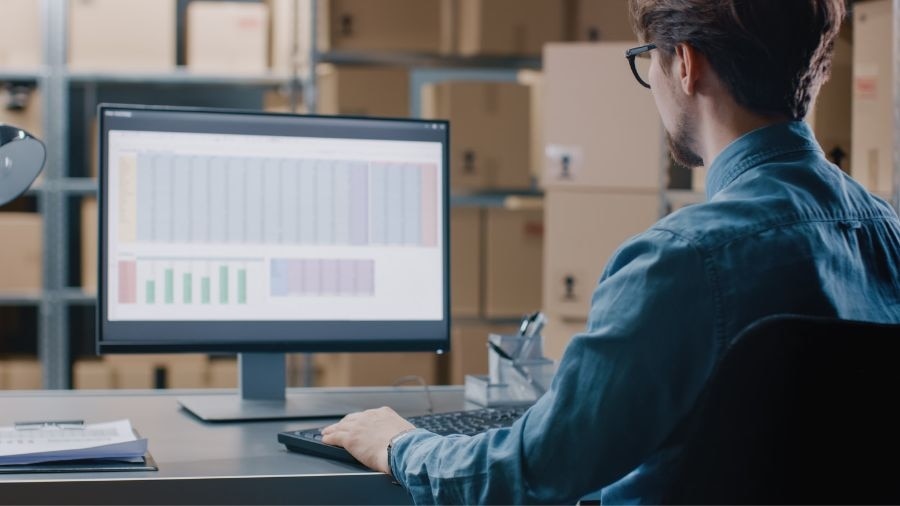Managing inventory efficiently requires a balance between having enough merchandise to meet demands and avoiding excess inventory. Unsold inventory can affect cash flow. You also may have carrying costs for insurance, storage, security, and transportation. Finding the right inventory levels can help you save by avoiding having to mark down or discard unsold inventory, and having enough inventory on hand ensures that you don’t have to turn customers away because what they want to purchase is out of stock. Two inventory control methods that help you maintain a balance of inventory are the push and pull inventory systems of management.

Inventory Management: Push and Pull Systems
The Push System of Inventory Management
In the push inventory system, you analyze sales data from previous years and consider current conditions to make sales projections. That information helps you order for the upcoming period. Factors such as the overall economic and political climate, consumer preferences, new or fewer competitors, product improvements, and emerging technologies can all affect the accuracy of your projections.
This type of inventory system is effective for merchandise with a steady, predictable sales pattern. For example, sales of electric razors may spike at Christmas and Father’s Day, but they’re relatively steady throughout the remainder of the year. Major product changes causing unexpected surges in sales are unlikely, so forecasting sales for the coming season is relatively straightforward. Other categories of goods suitable for this system include business staples, such as office furniture and shipping supplies.
An advantage to this method is that you tend to err on the side of caution so you don’t run out of goods. Because you order consistently, you may save on shipping costs and may qualify for volume pricing from some suppliers. The disadvantage of the push system is that unanticipated shifts in demand can result in a large surplus or shortage.
Pull System of Inventory Management
In the pull system of inventory management, you monitor current sales and place orders accordingly. With a pull system, you want to have just enough inventory on hand to satisfy demand with perhaps a little extra for unexpected surges in a product’s popularity. With this system, you place smaller orders more frequently than you would under the push system. It’s very similar to the just-in-time inventory management system, in which you order inventory when you need it.
The pull system works well for industries that see more fluctuations, such as computers and electronic equipment. For example, new models of mobile phones, chargers, and cords can become extremely popular quite rapidly and then become obsolete almost overnight. As long as you can maintain an adequate supply and respond to changes quickly, this system is effective at keeping inventory levels where they should be without overstocking. However, a delay from a supplier may cause you to run out of stock and lose sales and customers. You also pay higher shipping costs because you place more frequent orders.
Push/Pull Inventory Method
To benefit from the advantages of each system, you can use a push/pull method in which you apply the best features of each system to suit your particular business. This method is also effective when you transition from one system to another. Sophisticated inventory management software packages that make projections more accurately, track sales, and reorder items are also available to bolster your system.
Both push and pull systems have pros and cons, so a push/pull system that uses different approaches for different parts of your business may be helpful, especially when your business is switching from one method to another.
The push/pull system may look different for different companies. For example, you might use a push system for the raw materials you use and a pull system for any finished products you order and sell. Or you might use a hybrid system on everything, using the software to track current stock and demand, while also making forecasts about future demand based on all the different factors you consider in a push system.
Finding a balance in your inventory system is essential for keeping the right amount of inventory on hand. Inventory management software that integrates into your accounting software can help. 5.6 million customers use QuickBooks. Join them today to help your business thrive for free.


